What Are The Risks Of Taking The Lens Off A Camera While It Is Still On
Lots of us wear glasses to correct issues with our vision. This tin cause problems and become annoying when trying to take pictures. Glasses can make difficult for some people to get their center close enough to the viewfinder to be able to get a good view of what you lot are shooting. Here are some things that you tin do to help and mayhap convalesce the effect altogether.
Diopter Adjustment
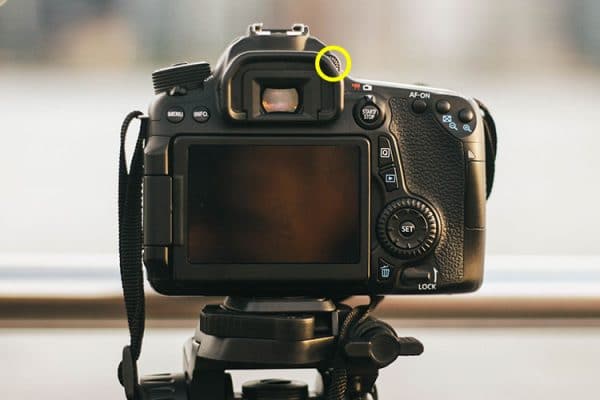
DSLR cameras have what'due south chosen an adaptable diopter. The diopter is part of the lens that yous look through via the photographic camera's viewfinder. You tin can adjust the diopter to help focus and acuminate the image that you see through the viewfinder. Depending on the severity of your vision problem that your glasses aid to correct, you may exist able to remove your glasses when you shoot and adjust your camera's diopter to your eyesight and so that everything appears articulate to you through the viewfinder.
A "Positive" adjustment to the diopter will do the same thing that reading glasses exercise. A "Negative" change to the diopter will do what glasses do for someone with myopia. Basically, if yous have trouble seeing distance and so use the "Minus" diopter setting. If you lot have trouble reading a book or with things upwardly close, then you lot'll desire to use the "Plus" diopter setting. Canon cameras typically have a diopter aligning that ranges from -3 to +ane.
Addon Diopter Lens
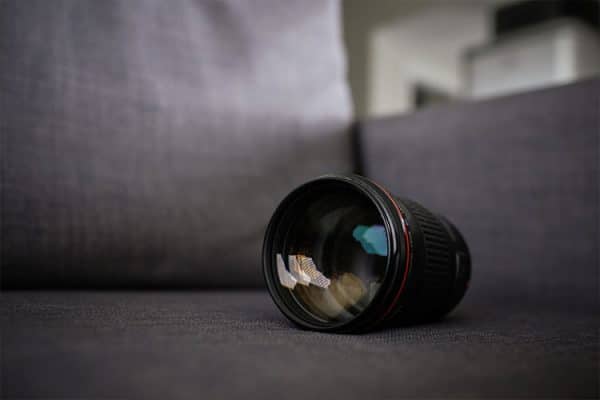
In that location are optional diopter/viewfinder lenses available from Canon also as other brands, that can take it from a -4 to +iii diopter. If you were to buy an addon diopter that was -2 and add together it to a camera whose built-in diopter had a range of -three to +one, then calculation the -2 diopter would essentially give you a range of -v to +ane. Most manufacturers also sell optional diopters where you lot simply remove the rubber piece (eyecup) effectually your viewfinder and the new diopter will attache in its place.
Nikon provides a chart to help users lucifer their prescription with the appropriate diopter addon (see chart beneath):
| Nikon eyepiece correction organization | |||||||||
| Prescription | +4 | +iii | +2 | +1 | 0 | -1 | -ii | -3 | -4 |
| Nikon correction lens | +3 | +ii | +one | 0 | -1 | -two | -three | -4 | -5 |
Large Eyecup
You lot can get a large eyecup for your camera that attaches to your existing eyepiece and it makes the rubber portion larger and so that information technology covers the lens of your eyeglasses. It'due south fairly unproblematic and straightforward and seems to piece of work well for a lot of photographers that wear glasses.
Hither is one on Amazon that many people recommend: http://www.amazon.com/Hoodman-Glasses-Hoodeye-Eyepiece-Cameras/dp/B007NKPSFW
Extended Eyepieces
Another choice to try is an eyepiece extender. This is an add-on that attaches to the existing eyepiece on your photographic camera. It basically functions by allowing you to get your confront further away from the body of your camper. This is really helpful if you lot're an eyeglass wearer.
Eyepiece Extender: https://world wide web.amazon.com/Canon-EP-EX15-Eyepiece-Extender-Cameras/dp/B0000AQI9E
Remove the Prophylactic around Viewfinder
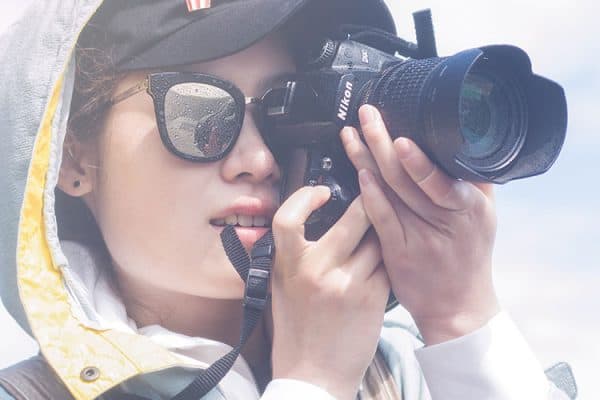
One affair that some photographers have found that works nicely while nonetheless wearing spectacles is to simply remove the rubber eyecup effectually the camera'southward viewfinder. Doing this volition let your centre to get closer to the viewfinders lens. Usually, the problem with wearing glasses is that it's hard to get your center close enough to the viewfinder lens, which makes it hard to see what you are photographing. Removing the rubber seems to do the trick for a lot of people.
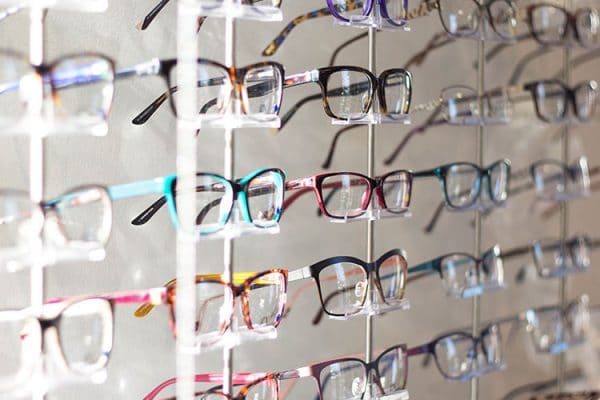
Change Your Frames
If you really want to proceed to habiliment your glasses and use your photographic camera's viewfinder, ane matter yous tin try is to change the blazon of glasses y'all have. Instead of using spectacles with an ultra-light wire frame, you tin endeavor switching to a heavier/stiffer metallic frame. This will allow your spectacles to sit a piffling closer to your face up and use slightly thinner lenses.
Endeavor Flip-Upward Frames
In that location are a few frame manufacturers for eyeglasses that make frames that allow you lot to flip upwardly one or both of the lenses. This tin brand things a lot easier while taking pictures if y'all currently have to take off your glasses to shoot and and then put them dorsum on to look at your subject or your LCD screen. With these types of frames, you lot can simply flip upwardly one lens while you shoot and notwithstanding keep your spectacles on the whole time.
I manufacturer that makes these types of frames is Scheyden. They brand the frames to fit both sunglass lenses and prescription lenses. Here is a link to their website: https://scheyden.com/CF_ClassicFlipUp.php
Progressive No Line Bifocals
Progressive No line bifocals, as well known as progressive lenses don't have the line in them that traditional bifocals have. Progressives lenses let you lot see shut-upwardly and far away, as well as everything in betwixt a lot better than regular lined bifocals exercise. This can help photographers immensely as you can find a happy medium while looking through your camera'southward viewfinder or at the LCD screen and not get frustrated by the line in your bifocals, or the drastic transition in between views with traditional bifocals. If you want to keep to wear glasses, as opposed to contacts, while shooting, definitely give these a try. Many photographers swear by them.
One Eye Open up or Both?
Some eyeglass wearers have said that they had problem seeing through their viewfinder clearly while closing one eye. I think to most of us endmost one eye while nosotros shoot is a natural matter to do. If this is the same thing that's happening to you, attempt looking through the viewfinder while keeping both eyes open up. I know it sounds weird and it may accept a little getting used to, just this seems to piece of work wonders for a lot of people.
Utilise "Alive View" (rear LCD screen)
Another option that I have personally used myself when I don't feel like looking through the viewfinder is to turn on the "Live View" feature and employ the cameras LCD screen instead. This works really well whether you are wearing glasses or contacts. The only downside to using the LCD screen to shoot is if you are shooting outside and information technology's fairly bright out. To help solve this issue, you can go an LCD Hood or a HoodLoupe like the ones beneath:
LCD Hood: https://www.amazon.com/Shield-Camcorder-Screens-Altura-Photo/dp/B01KMWMWFG
HoodLoupe: https://www.amazon.com/Hoodman-H32MB-HoodLoupe-Outdoor-Screens/dp/B074N4Z4J1/
Use Contacts Instead of Glasses
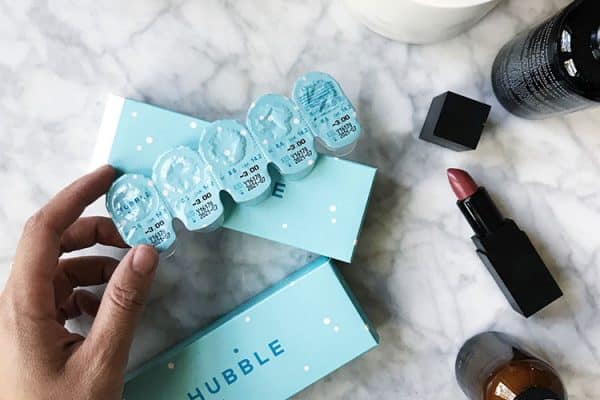
Some photographers notice that it'south easiest to ditch their spectacles all together when they are going to be shooting. This allows them to use their camera equally is and not have to make any special adjustments or tweaks to their camera. It's nevertheless nice to have an alternating solution for those days when you merely don't experience like wearing contacts or your optics are feeling a bit irritated.
Multifocal Contact Lenses
Bifocal contact lenses have the aforementioned ability as bifocal glasses practice, by having two different lens functions, assuasive you to run across about and far. But there's another blazon of contact lens that has a multifocal design like progressive bifocals, that gradually modify in ability and they are called Multifocal Contact Lenses. Many photographers say this is the way to get considering it allows yous to apply your camera equally normal without the need for any modifications.
Last but not Least…Go to your Heart Doctor
If nothing else seems to work for you, brand an appointment with your eye doctor and bring your camera with y'all. Most optometrists will work with you and your prescription to create a lens that will function well with your camera. They tin even show to the spot on your lenses to line upward with your camera's viewfinder to get the optimal position.
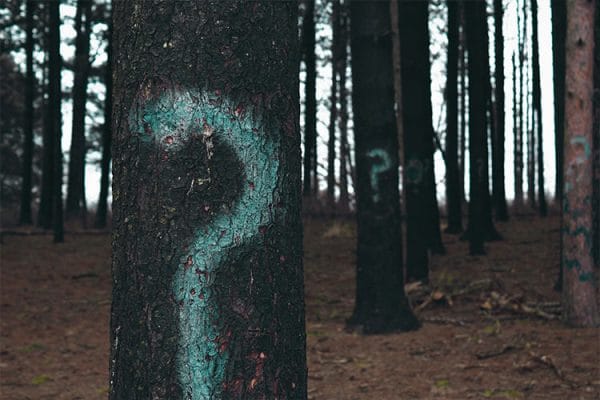
Can I add together a Larger LCD Screen to my DSLR Camera? Yeah, by using an HDMI connectedness from your photographic camera, you lot can connect it to seven" screen for both Live View and playback of images that you lot've taken. Many of these screens can actually mountain to your DSLR or video photographic camera, making information technology a very useful tool to use while shooting. Many of them come up with a hood to assist shade it while shooting outdoors or in a brightly lit expanse. Here is the one that we recommend: https://www.amazon.com/dp/B078GSPV1W
Are there whatsoever Devices that tin Help me with Focusing? Every bit a matter of fact, in that location are! Recently there have been a few devices hitting the market place that add a wireless transmitter to your camera and requite you the power to wirelessly command focus, zoom, view "Live View", accommodate discontinuity, shutter speed, and ISO. They also let you control exposure bracketing, HDR, timers and time-lapse. You lot are able to control and view all of this via a smartphone, tablet or computer. This can be very helpful for people with vision bug, fifty-fifty Astigmatism. You can check out one of the latest models here: https://www.bhphotovideo.com/c/production/1281339-REG/tether_tools_cawts03_case_air_wireless_tethering.html
Source: https://www.shuttertalk.com/photography-with-glasses/
Posted by: casnerwherted.blogspot.com

0 Response to "What Are The Risks Of Taking The Lens Off A Camera While It Is Still On"
Post a Comment